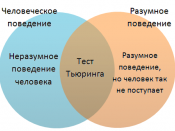The definition of culture is probably described in many words such as norms, traditions, belief, environment, value, and etc. depending on an individual or individuals in a certain group. Nevertheless, the word 'culture' tells us what the appropriate behavior in that society should and shouldn't.
As human beings are likely to make friends with another person whom they are familiar with, so it's pretty hard to cluster the variation of people who have different background and culture into one group together. For instance, we rarely see different hometown students talking to each other because of language and culture barriers. Most of Asians are taught to be shy and feel for others while Europeans are taught to be confident and merely focus on self-achievement. According to the divergent customs and values in particular areas, these become obstacles for building relationships between Asians and Westerners.
The communication has been characterized in two elements regarding cultural study: High Context and Low Context, which used to explain apparently the differing human behaviors as example below.
Low ContextHigh Context
Direct communicationIndirect communication
VerbalNonverbal
TalkativeQuiet
Emotion DisplayedEmotions hidden
IndividualCollective
High Context refers to nonverbal communication which expresses in a form of no oral behavior and supplied by receiver. There are several categories of nonverbal messages that can affect intercultural communication.
Kinesics (body motion)
Oculesics (eye contact)
Haptics (touch)
Proxemics (space and distance)
Olfactics (smell)
Chronemics (punctuality)
Artifacts (proper appearance)
On the other hand, low context that refers to spoken-language is also very significant on making friendships in cross-cultural communication. Europeans are considered to be in the group of low context whereas Thais are regarded as high context underlying their traits and expression.
Due to the differing thoughts and values, a perception distortion or a stereotype simply creates when one individual assigns attributes to another...


